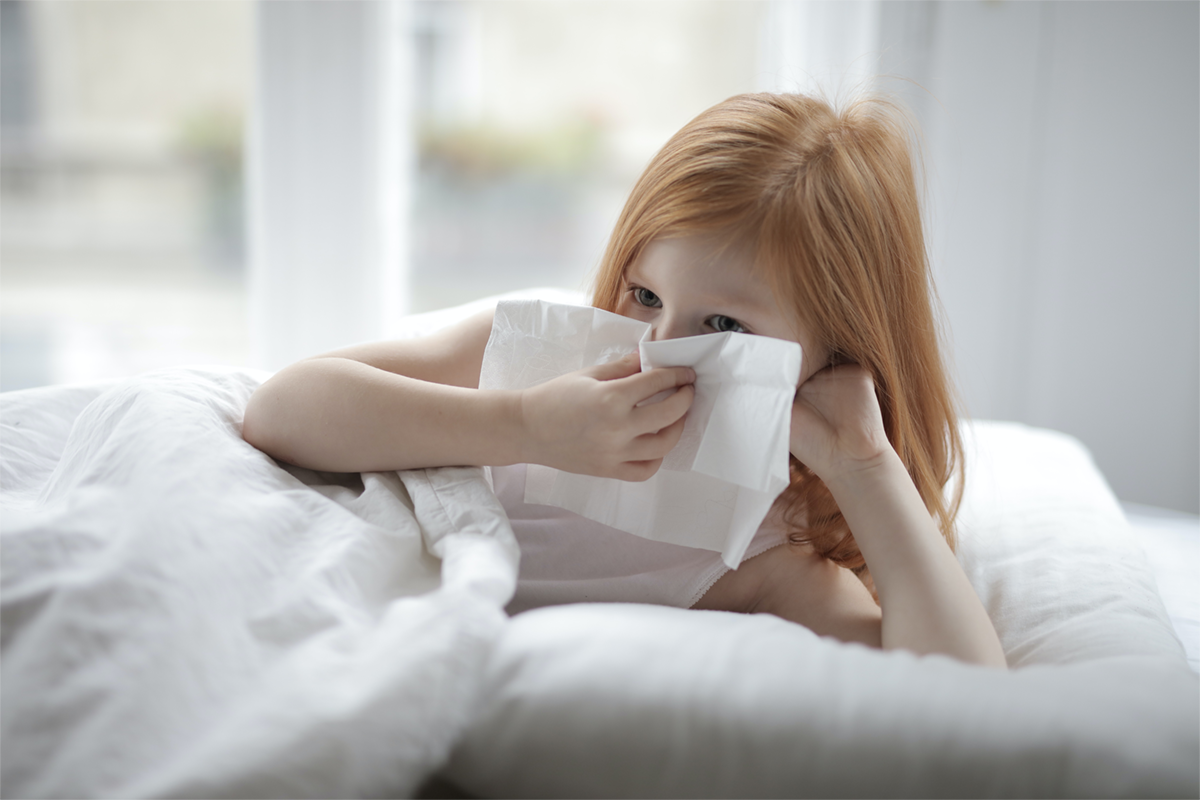
10 May How to Tell the Difference Between COVID and Allergies in Your Children
When the warmer weather starts to hit, it means it is finally time for kids (and adults) to be able to get outdoors and enjoy some fresh air. However, this time of year also means the onset of seasonal allergies. Depending on the child, seasonal allergies may include symptoms like cough, runny nose, sneezing and sore throat.
In our world today, these symptoms can be more worrying than ever before, as they also mimic some of the symptoms of COVID-19. There are many parents who are anxious about the spread of COVID-19, which is why it is essential to be able to distinguish the difference between seasonal allergies and a more serious virus such as COVID-19 or the flu.
Here are some tips that may help.
Look at the Big Picture
There is no denying that COVID-19 is a serious illness. This virus can cause a system-wide response in the body. That’s why with the flu or COVID-19, your child may have body aches, chills, fever, weakness, or respiratory symptoms all at once.
New symptoms
Due to North Texas being a difficult place to live for allergy sufferers, many parents attribute their children’s symptoms to their own allergy symptoms they suffer as an adult. But especially young children, ages two or younger, are less likely to have seasonal allergies than a viral infection. It also requires a doctor’s visit when these symptoms are new, when a child has never had allergy symptoms before, and now they suddenly “seem to have started” with allergies out of nowhere.
Other symptoms
If your child is having a loss of appetite, isn’t sleeping well, their appetite is off, or is fatigued, this is likely not allergies. Unlike what people hear in the news, which is mostly geared towards adult symptoms of COVID, most cases of COVID in children do not have fever. It seems like a “common” cold at first. The symptoms of runny nose, stuffy nose, are common to both viral infections as well as seasonal allergies.
With this, you may see symptoms only in the throat, nose and eyes including scratchy throat, coughing, runny nose, or itchy eyes, but you typically won’t see issues with body aches, fever, or chills. The symptoms are far more localized instead of including full-body responses.
Pay Attention to the Itch
When a child is eliciting a response to an allergy, a common word they will use is “itchy.” This is because allergies cause dryness and itchiness in the eyes and nose. They also tend to cause sneezing or itchiness in the back of the throat.
These typically aren’t symptoms of COVID-19. So, if your child’s chief complaint has to do with feeling itchy, they are more than likely dealing with allergies.
Think About the Cause of Coughing and Wheezing
By now, most parents know that respiratory complaints are among the most common indicators of COVID-19. If your child is struggling with wheezing, coughing, chest tightness or difficulty breathing, it can be cause for concern. However, it is important to stop and look at the other symptoms surrounding this attack, such as the presence of a fever. Many children with allergies also struggle with asthma, which is a very common cause of respiratory symptoms in young people.
While this information can be a helpful guideline, it does not replace a doctor’s diagnosis. If you have any questions about your child’s health and seasonal allergies, or if you are worried that your child may have COVID-19, do not hesitate to contract Continuum Pediatrics. You can call our office directly for an appointment at 817-617-8600 and our team will help you get a proper diagnosis for your child so that they can get back to feeling their best.

